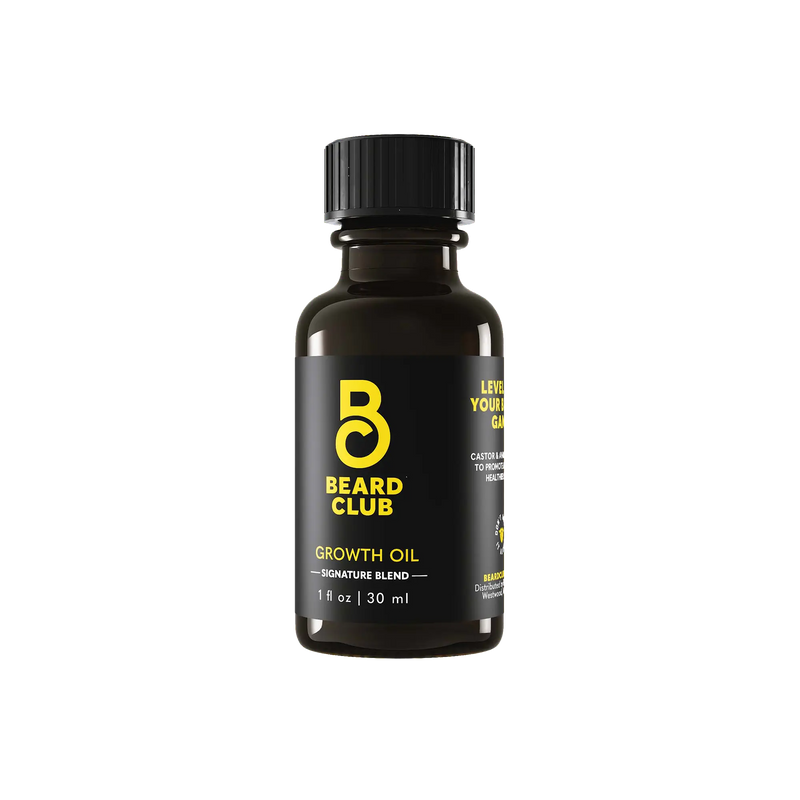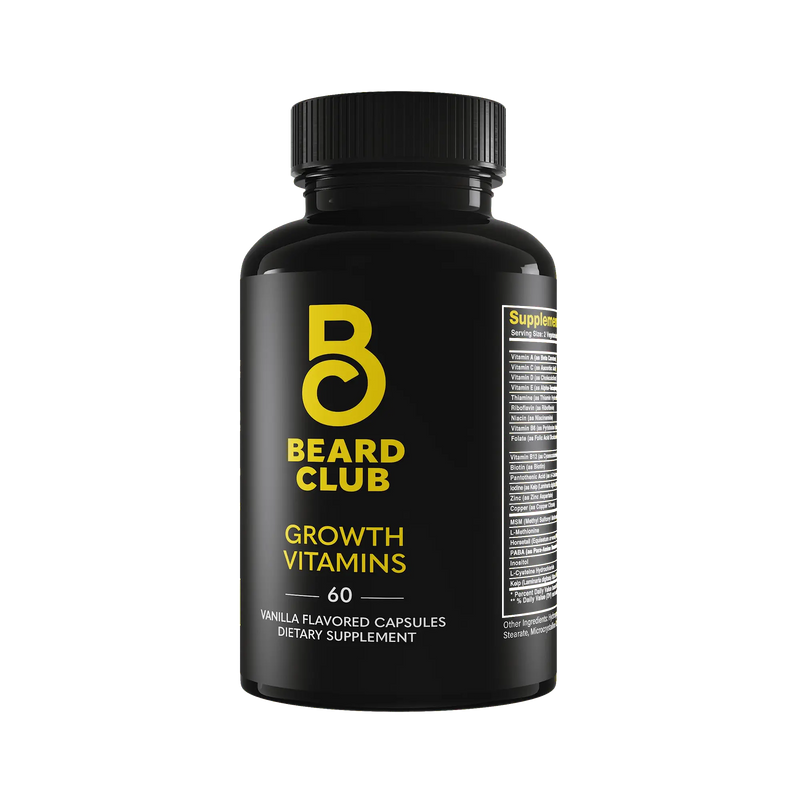Which Direction To Shave: With or Against the Grain? 5 Things To Know
Let's face it: there's a lot more to shaving than just scraping a blade across your face. It’s serious business and takes preparation and practice to get the ritual exactly right.
If you’ve ever felt the burn, battled bumps, or dealt with ingrown hairs, you know what we’re talking about. Shaving is an art form, a daily ritual that can either set you up for a smooth day or leave you wincing every time the wind hits your skin.
One of the biggest questions guys wrestle with is: should I shave with or against the grain? We’re here to help you figure it out and equip you for success. By the end of this post, you’ll know which direction to take that razor for the smoothest, cleanest shave.
These are five things you need to know about shaving with or against the grain.
1. What Does "Shaving With the Grain" Even Mean?
Before we talk about which direction to shave, let’s clear up what shaving "with the grain" means.
Your facial hair doesn’t just grow willy-nilly — it has a pattern, a direction, that it grows in. Shaving with the grain means shaving in the same direction as your hair growth. Take a minute to feel your face right now. Rub your hand across your beard — when it feels smooth, that’s with the grain. When it feels rougher, you’re going against it.
Knowing your beard’s grain is crucial. It’s not the same for every guy, and some parts of your face may have hair that grows in different directions.
For instance, the hair on your cheeks might grow down while your neck hair grows in a whole different direction. The first step to mastering your shave is getting familiar with this grain pattern. Take the time to map out that beard of yours.
To do this, look at your facial hair when it's a little grown out — maybe two or three days’ worth of scruff. That way, you can clearly see which way your hair is pointing. You’ll need to remember this for when the razor comes into play.
2. Shaving With the Grain: The Safe Bet
If you're new to the shaving game or if your skin is prone to irritation, shaving with the grain is going to be your best friend. Why? Because it’s gentler on your skin.
When you shave with the grain, you're not forcing the blade against the natural flow of your hair, which means you're less likely to cut yourself, cause irritation, or get razor burn.
Shaving with the grain also reduces the risk of ingrown hairs. Since you're not tugging at the hair as much, it’s less likely to curl back into the skin, which is a common cause of those annoying, inflamed bumps. Anything you can do to avoid this common shaving issue is very worthwhile.
You might be wondering, "If shaving with the grain is so great, why would anyone do it differently?"
Here’s the catch: shaving with the grain might not give you the super-close, smooth-as-glass shave some guys are after. It’s more of a maintenance shave — great for looking clean and polished but not necessarily baby-smooth.
Generally, if you're shaving with sensitive skin, go with the grain of the hair, especially when working on delicate areas like your neck or jawline. This method will be your go-to for a comfortable, irritation-free shave.
3. Shaving Against the Grain: Pros and Cons
Shaving against the grain is where things get tricky. This technique means shaving in the opposite direction of your hair growth. The idea behind it is to lift the hair up before cutting it, which leads to a much closer shave.
Sounds great, right? Well, not so fast. While this technique can give you that ultra-smooth result, it comes with some serious potential drawbacks.
When you shave against the grain, you increase the chances of razor burn, irritation, and ingrown hairs. That’s because you're forcing the razor to cut the hair at a sharper angle, which can leave it sitting just under the surface of your skin. That’s where ingrown hairs start, and no one likes dealing with those.
For some guys, the smoothness is worth the risk. If you’ve got tough skin and aren’t prone to irritation, going against the grain could work out fine. However, if you’ve ever dealt with razor burn or ingrown hairs, you might want to stick with the grain for the sake of your face.
If you want that close shave but don’t want the irritation, consider doing a combination approach — more on that below.
4. The Combination Approach: Best of Both Worlds
Can’t decide between shaving with or against the grain? You don’t have to. A lot of guys find success with a combination approach.
Start by shaving with the grain for your first pass. This will remove the bulk of the hair while being gentle on your skin. Then, if you want an even closer shave, lather up again and make a second pass against the grain, but only in areas where your skin is tougher and less prone to irritation.
The key here is to take your time and let your skin guide you. Don’t apply too much pressure — let a high-quality razor do the work. If you start to feel any tugging or discomfort, stop and go back to shaving with the grain.
Always use a fresh, sharp razor when attempting a combination approach. A dull blade will cause more friction and irritation, especially when going against the grain. The better the razor’s quality, the better the quality of your shave will be.
Consider picking up a straight razor from The Beard Club if you’re ready to get serious about upgrading your shaving game.

5. Prepping Your Skin is Half the Battle
No matter which direction you decide to shave, one thing remains constant: preparation is key. Skimp on this, and it won’t matter which way you’re shaving — you’re still setting yourself up for a rough time. Properly prepping your skin softens your hair and makes shaving easier and less irritating.
Here’s your pre-shave routine checklist:
- Start With a Warm Wash: Wash your face with warm water to open up the pores and soften the hair. You can even use a warm, damp towel on your face for a minute or two if you’re feeling fancy.
- Use a Pre-Shave Oil: Applying a pre-shave oil before your shaving cream helps lubricate your skin and creates a barrier between your face and the razor. This reduces friction and protects your skin.
- Apply Shaving Cream or Gel: Pick a quality shaving gel that provides plenty of cushion and hydration for your skin. Avoid cheap foams that dry out your face.
- Use a Sharp Razor: A dull blade is a one-way ticket to irritation city. Make sure you’re using a fresh razor to reduce pulling and dragging. You can do a good job with a standard cartridge razor, but a straight razor or safety razor will get you an even more satisfying shaving experience.
Once your skin is prepped, you're ready to choose your shaving direction.
Here’s a tip before we move on: if your skin is especially sensitive, try shaving after a shower. The steam and warm water will soften your facial hair, making it easier to cut. You might be surprised by how much of a difference this little change makes.
After your shave, go ahead and rinse off your face with cold water, which helps your pores shrink a bit and reduces irritation. Warm water after a shave might sound good on paper, but it’s not quite as soothing or refreshing.
Final Thoughts
At the end of the day, there’s no one-size-fits-all answer to whether you should shave with or against the grain. It all comes down to your skin type, your beard growth pattern, and how close of a shave you’re after.
All of the methods below can work under certain circumstances.
- With the Grain: Best for sensitive skin, less irritation, but not as close of a shave.
- Against the Grain: Closer shave, but higher risk of razor burn and ingrown hairs.
- Combination Approach: A balanced method that offers the best of both worlds.
Whatever direction you choose, preparation is half the battle, and the right tools will make all the difference. Whether you go with the grain, against it, or mix it up, your face will thank you for taking the time to do it right.
Sources:



















